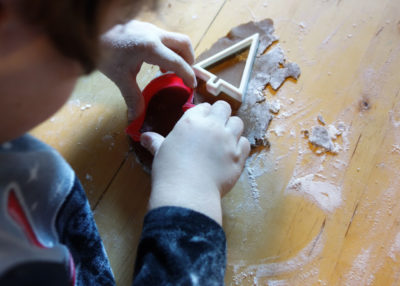In my weekly community call and free sessions during this time, the issue of balancing working at home with children is primary. Here are a few reflections, offered in two parts to support you to integrate the pieces that resonate with you.
I will never forget the time I was sitting at my desk, next to the sliding glass door that led to our backyard, trying to write an article on conscious parenting for my blog, while the children played outside. Invariably, they would pop in with a challenge or need, and I was getting more irritable by the moment, eventually yelling in my head, “Can’t you leave me alone!! So I can write this conscious parenting article!!!” The irony was not lost on me. It took awhile for me to get it, but eventually I stopped trying to write those while also being on as a parent, and in the meantime I learned a few hacks that would help me practice from home.
If we use the quarantine well, we can find that this moment in time offers us a unique opportunity for reconnection, but we do have to balance this with all of our responsibilities.
When we are doing so, we can actually bring full presence to our children, rather than half or distracted attention that is not felt deeply and results in whining and excessive challenges.
Here are some of the things that have worked well for me and other mothers:
- If possible, chunk your time differently. Rather than work a typical day’s schedule. Knowing your own best work times, see if you can spread some of your day’s work out into time frames when the children are still asleep. For example, mornings from 5am-8am, or evenings from 8pm-10pm. Depending on your children’s ages, the time frames will be different, but overall you might find that you’ll be far more effective during those work hours and they will give you wiggle room to attend to your children during the day. Some may hesitate to ask employers for this flexibility, but it truly is in your employer’s best interest as you are sure to be more productive in the hours with less interruptions.
- Start their day with connection. It’s extremely helpful to start our child’s day with attention from us. We want to fill their cup, rather than have them wake to us being distracted by work. Most moms can relate to this resulting in excessive whining and neediness throughout the day because they are not reassured by our connection. (Just be sure that you have filled your cup as well, so that you have the attention to give them.) Give yourself permission to really enjoy this time with them. This time is a gift for you as well. When we let go of the to do’s, we can enjoy the sweetness of all that our children bring. Let your cup be filled by these moments of connection. The amount of time you spend is less important than the quality of real attention you offer to them and yourself. This is a good time for extra snuggles, reading a story, dancing, making breakfast together, playing. A good 30 minutes to an hour of undivided attention can feed our children well. Tune into when your children are neediest and think of ways to bring a window of undivided attention into those times.
- Orient them to the day ahead. It is helpful to remind children of the day’s rhythm, when they will have your attention, when they will play on their own, and what the options for play are, and at what times. This need not be rigid but a general guideline. A visual chart with pictures or schedule can be helpful and reassuring. Depending on your children’s ages and temperaments, you may have to cycle through a few different models from a typical daily schedule chart, to a Kanban, to an interactive checklist. In general, children (age 4 and up) do well when they are given some participation in their day by checking off a list or moving a Kanban post it to done. It also reduces power struggle moments between you. Also be sure to keep in mind, who you are as a parent, if you love lists and schedules, then you’ll find this piece easy and exciting. If you are more of a go with the flow personality, then your version might be more simple to match your lifestyle.
- Incorporate moments of connection during the day. Mealtime or diaper changing is an especially useful time to use for this. So much has to do with the intention and attention we bring to it. These daily, unavoidable moments are a great time to consciously let go of your work, and give yourself a break to enjoy your children. (If you were at an in person job, you would be legally entitled to breaks and a lunch.) It helps to see this time as a gift in your workday, to be silly, to foster giggles, to check in about the day, to hear what they’ve been playing. Knowing they will have your attention at these rhythmic times also helps to reduce their anxiety and neediness during the rest of the day because it brings some predictability. (Note: if you are wiped out/stressed from work and you can’t muster the attention sometimes, you can name this: “mama’s having a rough day” and take more solo time. Life happens. As long as there is an overall consistency, they will be okay.)
- See through your children’s eyes. Keep in mind that young children don’t know what to make of a computer screen. Seeing a parent looking at a screen is confusing for children. Think about what someone looks like when they are looking at a screen. There is a way that we are absorbed, hypnotized, less present, and the children feel it. In the same way that children will seek to connect when we have distanced by speaking on the phone, children have a natural need to call us out of this zombie like state to return to them. You can have a playful discussion with them, explaining a little about what you are doing on the computer and letting them know that even though it looks funny, you are there if they need you (even if it’s just a reassurance, “mama’s here, I’ll help you in a minute”). It is also helpful to make a pretend keyboard/computer/phone setup that mimics yours with lots of paper, so they can play out what they are seeing. Children are wired to see their parents cooking, gardening, tending, behaviors that they can imitate as an essential part of their play life. Try to include and bring them into some of these things in your open windows so that they can play at imitating you later.
Motherhood, like life, is a process. We will always have to keep adjusting and finding what works for each moment in time. If you feel agitated in reading these suggestions or they feel overwhelming, that is likely a sign that you are depleted and need to rest. I’ve been there many times. Even if it seems unmanageable in the moment, find a way to have a regroup time that allows your nervous system to reset before you try implementing any of these. Take some time to tune into your inner child and ask what she is needing to feel better, more rested, more supported.
As always, be gentle with yourself. Use what works and keep connecting with your intuition and spiritual source about what is most loving for you and your children, in your situation. Reach out and have a brainstorming call with a friend. Ask your elders or coworkers. Above all, be willing to step outside of the box of expectations (everything can adapt) and trust your heart.
This article is continued in Part 2 here…

